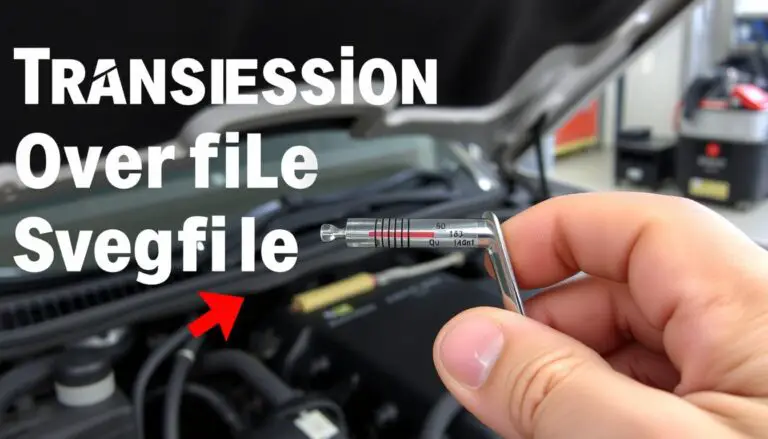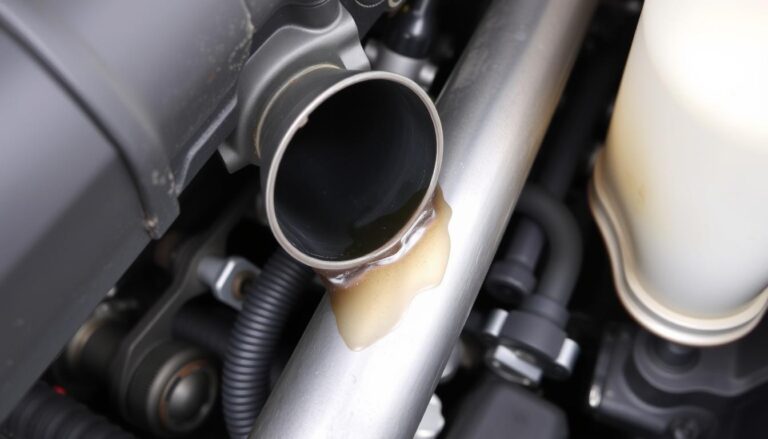As a Tesla proprietor, the imperative of a pristine windshield for vehicular safety cannot be overstated. The often neglected wiper fluid plays a pivotal role in this endeavor. It is imperative to regularly inspect and replenish your Tesla’s wiper fluid to ensure unimpeded visibility under inclement weather conditions.
Adherence to Tesla maintenance protocols transcends mere battery charging; it encompasses the verification of all operational systems. The wiper fluid’s contribution to windshield clarity cannot be understated. This discourse aims to elucidate the significance of wiper fluid in your Tesla, coupled with practical instructions on its inspection and replenishment.
Key Takeaways
- Regularly checking your Tesla’s wiper fluid level is crucial for safe driving.
- Using the correct type of wiper fluid can improve your windshield’s cleanliness.
- Refilling your Tesla’s wiper fluid is a simple process that can be done at home.
- Proper wiper fluid maintenance is part of overall Tesla maintenance.
- Clear visibility is essential for safe driving, specially during adverse weather conditions.
Understanding Tesla’s Wiper Fluid System
The wiper fluid system in your Tesla is paramount for ensuring optimal driving conditions. It is a critical component that guarantees clear visibility under various weather conditions, including rain, snow, and other adverse conditions.
Wiper Fluid Reservoir Location in Different Tesla Models
The location of the wiper fluid reservoir differs across Tesla models. Identifying its location is crucial for effortless maintenance.
Model 3 and Model Y Location
In Tesla Model 3 and Model Y, the wiper fluid reservoir is situated under the hood, on the driver’s side. Its accessibility facilitates effortless refilling.
Model S and Model X Location
For Tesla Model S and Model X, the reservoir’s location under the hood is consistent, albeit with slight variations. Refer to your owner’s manual for precise positioning.
Capacity and Specifications
The capacity and specifications of the wiper fluid system vary by Tesla model. Tesla advocates for the use of high-quality wiper fluid, capable of withstanding freezing temperatures. The reservoir’s capacity generally ranges from 2 to 3 liters.

How to Use Wiper Fluid in Tesla: Step-by-Step Guide
To ensure unobstructed visibility during Tesla operation, it is imperative to understand the correct application of wiper fluid. This instructional guide aims to facilitate the maintenance of a pristine windshield, thus enhancing driving safety.
Safety Precautions Before Starting
Initiating the wiper fluid refill process necessitates adherence to certain safety protocols:
- Ensure the vehicle is in a stationary state with the parking brake engaged.
- Don protective gloves to mitigate potential skin irritation.
- Verify that the surrounding environment is adequately ventilated.
Preparing for Refill
Preparation for the refill entails identifying the wiper fluid reservoir’s location, which varies across Tesla models. Consult your owner’s manual for precise positioning. It is also essential to utilize the wiper fluid type endorsed by Tesla.
Refilling Process
The refilling procedure encompasses several critical steps:
Opening the Reservoir
Initiate by unscrewing the reservoir cap in a counterclockwise direction. Certain models may feature additional fastening mechanisms.
Pouring Technique
Subsequently, pour the wiper fluid into the reservoir with utmost care, employing a funnel if necessary to prevent spills.
Closing and Securing
Upon completion of filling, secure the reservoir by twisting the cap clockwise until it is firmly locked in place.
Testing After Refill
Post-refill, activate the windshield wipers to verify the fluid’s efficacy. For those uncertain about wiper activation, refer to this comprehensive guide on how to turn on windshield wipers.

Choosing the Right Wiper Fluid for Your Tesla
The selection of wiper fluid for your Tesla is paramount for ensuring unimpeded visibility under adverse weather conditions. The plethora of wiper fluids available complicates this decision, necessitating a thorough understanding of the various types and their compatibility with your Tesla.
Recommended Wiper Fluid Types
Several wiper fluid types are pertinent for consideration. These encompass:
All-Season Formulas
Formulated to excel across a spectrum of temperatures and weather conditions, all-season wiper fluids are a practical choice for many Tesla proprietors. They strike a balance between efficacy in cleaning and protection against freezing.
Eco-Friendly Options
For Tesla owners prioritizing environmental stewardship, eco-friendly wiper fluids are available. Comprising biodegradable components, these fluids are less detrimental to the environment. They maintain cleaning efficacy while minimizing ecological impact.
Climate Considerations
The climate in which your Tesla is operated significantly influences the optimal wiper fluid selection. Various formulations are crafted to address distinct weather scenarios.
Cold Weather Formulations
In colder climates, wiper fluids with anti-freeze properties are imperative. These formulations prevent the fluid from freezing on the windshield, ensuring uninterrupted visibility.
Hot Climate Recommendations
In hotter climates, the focus is on wiper fluids that can effectively clean the windshield without leaving residue or streaks, even at elevated temperatures.
Tesla’s Official Recommendations
Tesla advocates for the use of wiper fluids that adhere to specific standards for quality and performance. It is prudent to refer to your owner’s manual or Tesla’s official website for the latest guidance on wiper fluid specifications.
Maintaining Your Tesla’s Wiper Fluid System
The upkeep of your Tesla’s wiper fluid system is paramount for unobstructed visibility in inclement weather. A diligently maintained system guarantees a pristine windshield, thus bolstering your safety on the thoroughfare.
Regular Checks and Maintenance Schedule
Consistent inspections are imperative for the upkeep of your Tesla’s wiper fluid system. It is advisable to verify the wiper fluid level each time you refuel or at least once every thirty days. Concurrently, scrutinize the wiper blades and nozzles for any indicators of deterioration or damage.
Schedule: Verify wiper fluid level monthly, inspect wiper blades every six months, and cleanse nozzles and lines annually.
Cleaning the Nozzles and Lines
The cleansing of nozzles and lines is a fundamental aspect of wiper fluid system maintenance. Obstructed nozzles can result in suboptimal windshield cleaning, jeopardizing your visibility.
Clearing Clogged Nozzles
To rectify clogged nozzles, employ a small pin or needle to delicately dislodge any obstructions. Eschew the use of abrasive chemicals or force, which could impair the nozzles.
Flushing the System
Flushing the wiper fluid system entails the expulsion of the antiquated fluid and replenishment with novel fluid. This procedure should be executed annually or as stipulated by Tesla.
Winter Maintenance Tips
In the winter season, employing a wiper fluid that is impervious to freezing is crucial. Tesla advocates for the utilization of a fluid capable of withstanding temperatures as low as -20°F (-29°C) in frigid climates.
“Employing the correct wiper fluid in winter can markedly enhance visibility and safety,” Tesla’s maintenance manual elucidates.
Troubleshooting Common Wiper Fluid Issues in Tesla Vehicles
Experiencing wiper fluid malfunctions in your Tesla is a common occurrence. This section aims to guide you through identifying and resolving these issues. Tesla’s sophisticated wiper fluid system is engineered for peak performance. Yet, it is not impervious to problems.
No Fluid Spraying
One prevalent issue Tesla owners encounter is the failure of the wiper fluid to spray. This problem can stem from a variety of causes, including clogs, electrical malfunctions, or mechanical defects.
Electrical Issues
Electrical malfunctions often result from faulty wiring or a malfunctioning wiper control module. Inspecting the fuse box for blown fuses related to the wiper system is a prudent initial step. If a fuse is found to be blown, its replacement may rectify the issue.
Mechanical Problems
Mechanical issues, such as a clogged wiper nozzle or a faulty pump, can also impede fluid spraying. Cleaning the nozzles with a small pin or replacing them if necessary can often resolve the issue. Diagnosing pump problems typically necessitates professional intervention.
Leaking Fluid
Leaking wiper fluid can lead to reduced visibility and system malfunction. Identifying the source of the leak is essential for effective troubleshooting.
Identifying Leak Sources
To identify a leak, inspect the wiper fluid reservoir, hoses, and connections for signs of damage or wear. Checking the reservoir cap for tightness and inspecting the hoses for cracks or loose connections can help pinpoint the leak source.
Temporary Fixes
For minor leaks, a temporary fix might involve tightening loose connections or using a sealant to stop the leak. It is, though, imperative to follow up with a proper repair or replacement as soon as possible.
Warning Messages on Dashboard
Sometimes, Tesla vehicles display warning messages related to the wiper fluid system on the dashboard. These messages can indicate low fluid levels, system malfunctions, or other issues.
When a warning message appears, it is crucial to consult your owner’s manual or contact Tesla support for guidance. Checking the wiper fluid level is usually the first recommended step, followed by other troubleshooting measures as advised by Tesla.
Advanced Tips for Tesla Wiper Fluid Usage
To maximize the efficiency of your Tesla’s wiper fluid system, several advanced strategies can be employed. Enhancing wiper fluid usage not only ensures clearer visibility during inclement weather but also extends the life of your vehicle’s windshield and wiper blades.
Optimizing Fluid Consumption
Adjusting your wiper settings based on weather conditions is a key strategy for optimizing fluid consumption. Utilizing the intermittent wiper setting during light rain or mist can notably reduce fluid usage. Prior to activating the wipers, ensuring the windshield is free from debris can also prevent excessive fluid consumption.
Using the Auto-Clean Feature
The Auto-Clean feature in Teslas is intended to clean the windshield and camera lenses. To maximize its effectiveness, it is essential to fill the wiper fluid reservoir with a high-quality fluid that matches your region’s climate. For further guidance on addressing common wiper fluid issues, refer to this resource.
DIY Wiper Fluid Solutions
Some Tesla owners opt for DIY wiper fluid solutions to tailor the scent or ingredients. A basic recipe involves combining water, white vinegar, and a minimal amount of dish soap. It is imperative to verify that any homemade solution is compatible with your Tesla’s wiper system to prevent damage.
| DIY Ingredient | Proportion | Benefit |
|---|---|---|
| Water | 80% | Dilutes other ingredients |
| White Vinegar | 15% | Anti-bacterial properties |
| Dish Soap | 5% | Cleaning agent |
Conclusion
The significance of appropriate wiper fluid management for Tesla proprietors cannot be overstated, given its pivotal role in ensuring unobstructed visibility across a spectrum of climatic conditions. A comprehensive grasp of Tesla’s wiper fluid mechanism, coupled with the selection of an optimal fluid, and the execution of routine inspections, substantially augments the vehicle’s operational efficacy and safety quotient.
Adherence to a regimen of Tesla Maintenance mandates the periodic verification of wiper fluid levels, the cleansing of nozzles and conduits, and the resolution of prevalent malfunctions. Adherence to the methodologies delineated within this discourse empowers Tesla proprietors to refine their wiper fluid utilization, capitalizing on the sophisticated capabilities inherent in the auto-clean functionality.
The upkeep of the wiper fluid apparatus constitutes a quintessential yet efficacious strategy to guarantee a secure and pleasurable vehicular excursion within your Tesla. Integration of Tesla Wiper Fluid maintenance into your routine vehicular assessments affords you the assurance of driving with unwavering confidence, assured that your windshield wipers are in optimal condition.
For further elucidation on Wiper Fluid Maintenance and ancillary Tesla-related subjects, consult Tesla’s authoritative resources and documentation. Vigilance and proactivity in regards to your vehicle’s upkeep will facilitate a more seamless and secure driving experience.
FAQ
Where is the wiper fluid reservoir located in my Tesla?
The wiper fluid reservoir’s location is model-specific within the Tesla lineup. For the Model 3 and Model Y, it resides in the front trunk. In contrast, the Model S and Model X feature it either under the hood or within the front trunk.
What type of wiper fluid is recommended for my Tesla?
Tesla advocates for the utilization of premium, all-season wiper fluid, tailored for automotive windshield washer systems. Eco-friendly alternatives or formulations tailored to specific climates are also viable options.
How often should I check my Tesla’s wiper fluid level?
Regular inspections of your Tesla’s wiper fluid level are advisable, ideally during routine maintenance or when the windshield washer system’s functionality is compromised.
Can I use DIY wiper fluid solutions in my Tesla?
Some Tesla proprietors have successfully employed DIY wiper fluid concoctions. It is, though, imperative to verify that any homemade mixture is compatible with your vehicle’s components and does not jeopardize the wiper fluid system’s integrity.
Why is my Tesla’s wiper fluid not spraying?
Non-spraying wiper fluid in your Tesla might stem from electrical malfunctions, mechanical defects, or clogged nozzles. Inspect the wiper fluid reservoir, electrical connections, and nozzles to pinpoint the problem.
How do I clean the wiper nozzles and lines in my Tesla?
Cleaning the wiper nozzles and lines necessitates the use of a soft brush or cloth to dislodge debris. Subsequently, flush the system with a water-mild detergent mixture. Always refer to your owner’s manual for precise cleaning instructions.
Can I use winter wiper fluid in my Tesla during the summer?
Winter wiper fluid, formulated for cold climates, is not advisable for summer use. Opt for summer wiper fluid or an all-season variant to maintain optimal performance in warmer temperatures.
What should I do if I notice a leak in my Tesla’s wiper fluid system?
Upon detecting a leak in your Tesla’s wiper fluid system, identify the leak’s origin. Consult your owner’s manual or contact a Tesla service center for guidance. Temporary solutions may exist, but prompt resolution is crucial to prevent further damage.


